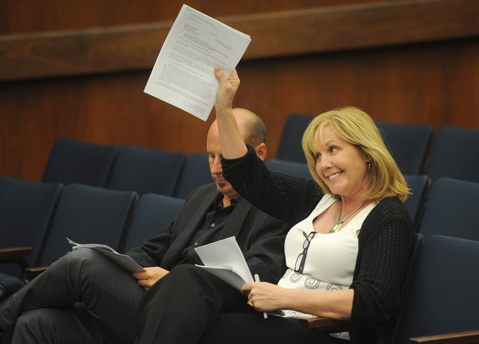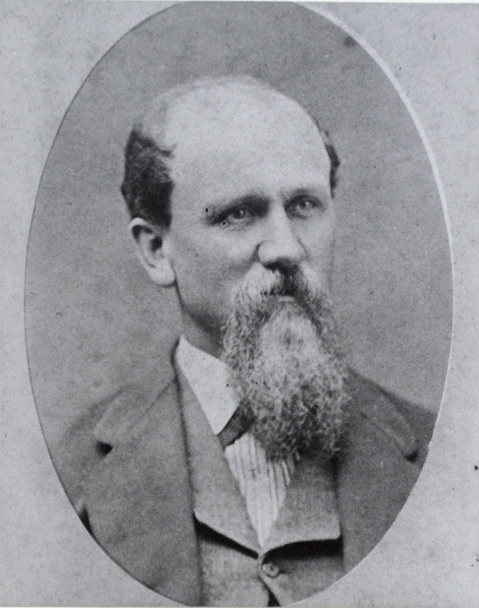A Muddy Affair: Historic Home Spared Demolition
Pearl Chase Society Goes to Bat for Montecito's 174-Year-Old Hosmer Adobe

When the brother-and-sister duo behind the development of the Funk Zone started to tear down and rebuild one of the last historic adobes in Montecito, the Pearl Chase Society mobilized. After months of back and forth between the preservationists and owners Katie Hay and Brian Kelly, the Board of Supervisors unanimously followed a move by 1st District Supervisor Salud Carbajal to “give it a crack” — and both deny and uphold an appeal filed by the Society. Though the vote was largely over semantics, it indicated a successful persistence on the part of the Society and an end to a six-month squabble: The Juarez-Hosmer Adobe house will be rehabilitated rather than demolished.
Five years ago, Hay and Kelly purchased the 174-year-old sun-dried structure at 461 San Ysidro Road for roughly $700,000. In order to rehabilitate the building, the owners sought approval from the Historic Landmarks Advisory Commission (HLAC), but when the work was about to commence, they found the bricks were in worse condition than they originally thought. So Hay and Kelly returned to the HLAC for a permit to demolish the structure and construct a replica. With a plan provided by engineering firm Taylor & Syfan, the HLAC gave them the green light to reconstruct with a 5-3 vote, and the project began last November.

But the Pearl Chase Society cried foul and likened a reconstruction to a “Disneyland version of history.” Before Montecito was Montecito — and California was even California — the structure was constructed by Victor Juarez and his wife, Maria Dominguez. Later in the 19th century, the adobe was passed on to the Hosmers. Thomas Hosmer served as 1st District supervisor from 1885-1893. In January, the preservationists appealed the HLAC decision — an unprecedented action, they said — arguing the engineering firm was ill equipped to preserve the adobe. The petition called for a second opinion, contended appropriate peer review was not followed, claimed public notice was inadequate, and the project lacked proper documentation.
On Tuesday, both sides gave presentations, and a cluster of public commenters chimed in. Going first, attorney Marc Chytilo, for the Pearl Chase Society, thanked Hay — a sentiment reiterated by nearly every speaker — for her effort to secure a second opinion from Nels Roselund, an expert in 19th-century adobe whom the Society endorsed. Roselund determined that the adobe could not be preserved “in situ” but found some of the bricks were salvageable and could be separated and reused. “This is the best that can be done,” said Hattie Beresford, vice president of the Pearl Chase Society, and added it was much better than a “complete wrecking ball.”
In addition to the remodeled project, Chytilo asked the supervisors to include various conditions — a more detailed treatment plan, a speedy start to begin work to beat the potential El Niño winter, protection of dismantled bricks from weather, and monitoring of the project.
Representing Hay and Kelly, architect Clay Aurell told the board that when the owners purchased the structure, it had already been exposed to significant water damage and cracking. “We don’t want to wait,” Aurell said, addressing the timing issue. He further said the owners have gone “above and beyond” to address the historic integrity of the site. He expressed concern about adding “unnecessary” steps and briefly mentioned the additional cost. Following questions from Supervisor Doreen Farr as to exactly how the dismantled adobe would be protected given the dirt surroundings, owner Katie Hay approached the podium and gave a detailed description of storing the bricks, a discussion that prompted Supervisor Peter Adam to call such construction conditions “arcane.”
During the public comment, Beresford also addressed the owners’ promise to appropriately handle the bricks and urged the supervisors to “put it in writing.”
Livening up the technical talk was Shakuntala Zakheim, a 39-year-old descendant of the Hosmer family, who said she would often stay with her grandmother in the adobe house as a kid. Now an art conservationist and teacher in Los Angeles, Zakheim said she jumped in her car to drive up to speak at the hearing at the last minute on Tuesday. “There’s a big difference in painting the ‘Mona Lisa’ over rather than fixing a crack,” Zakheim said. “This is a case where we have the ‘Mona Lisa.’ It’s an ugly shack, but it’s important.”
From here, the supervisors tossed the matter to the Planning and Development staff, who will determine if the conditions urged by the Pearl Chase Society will be written into the land-use permit.



